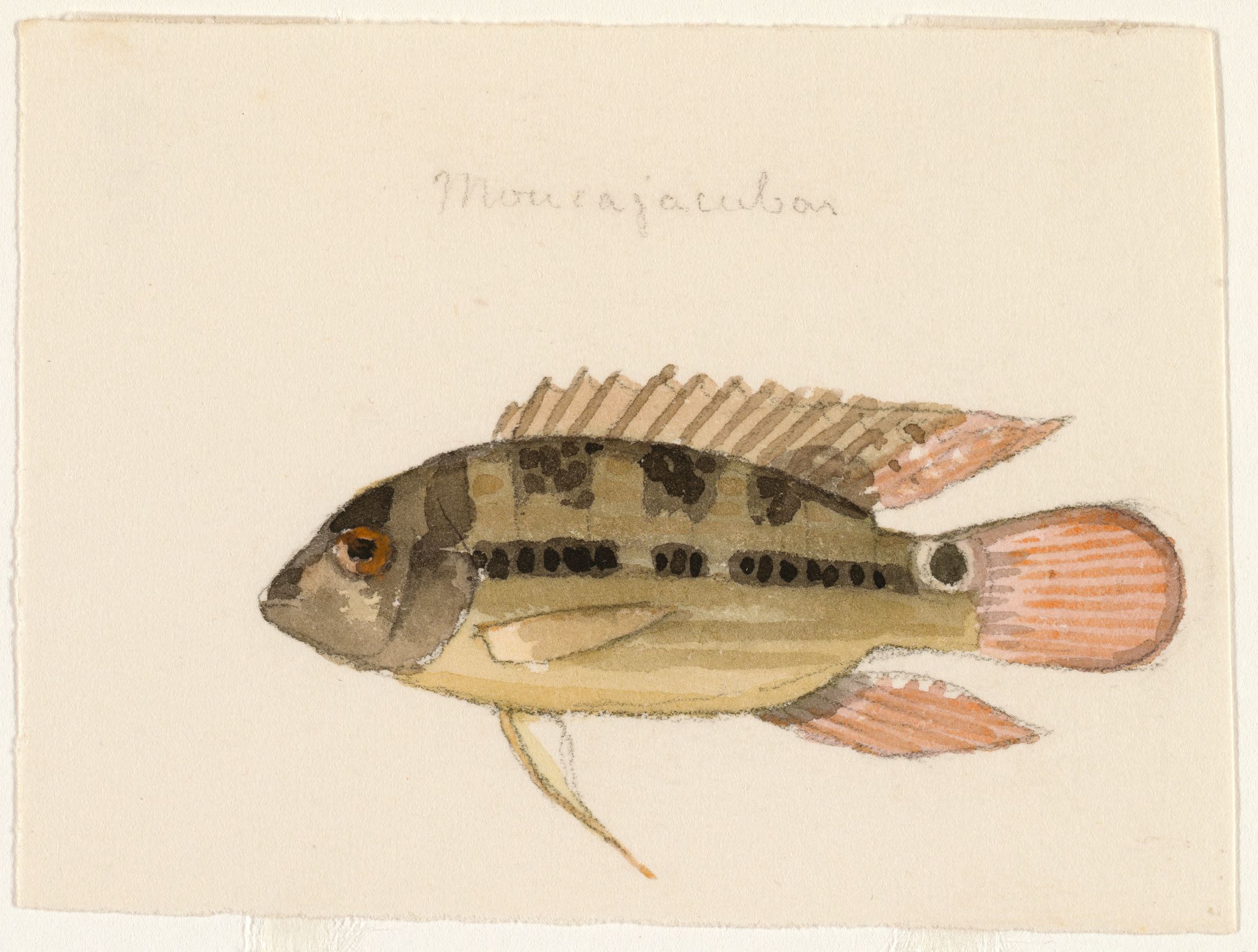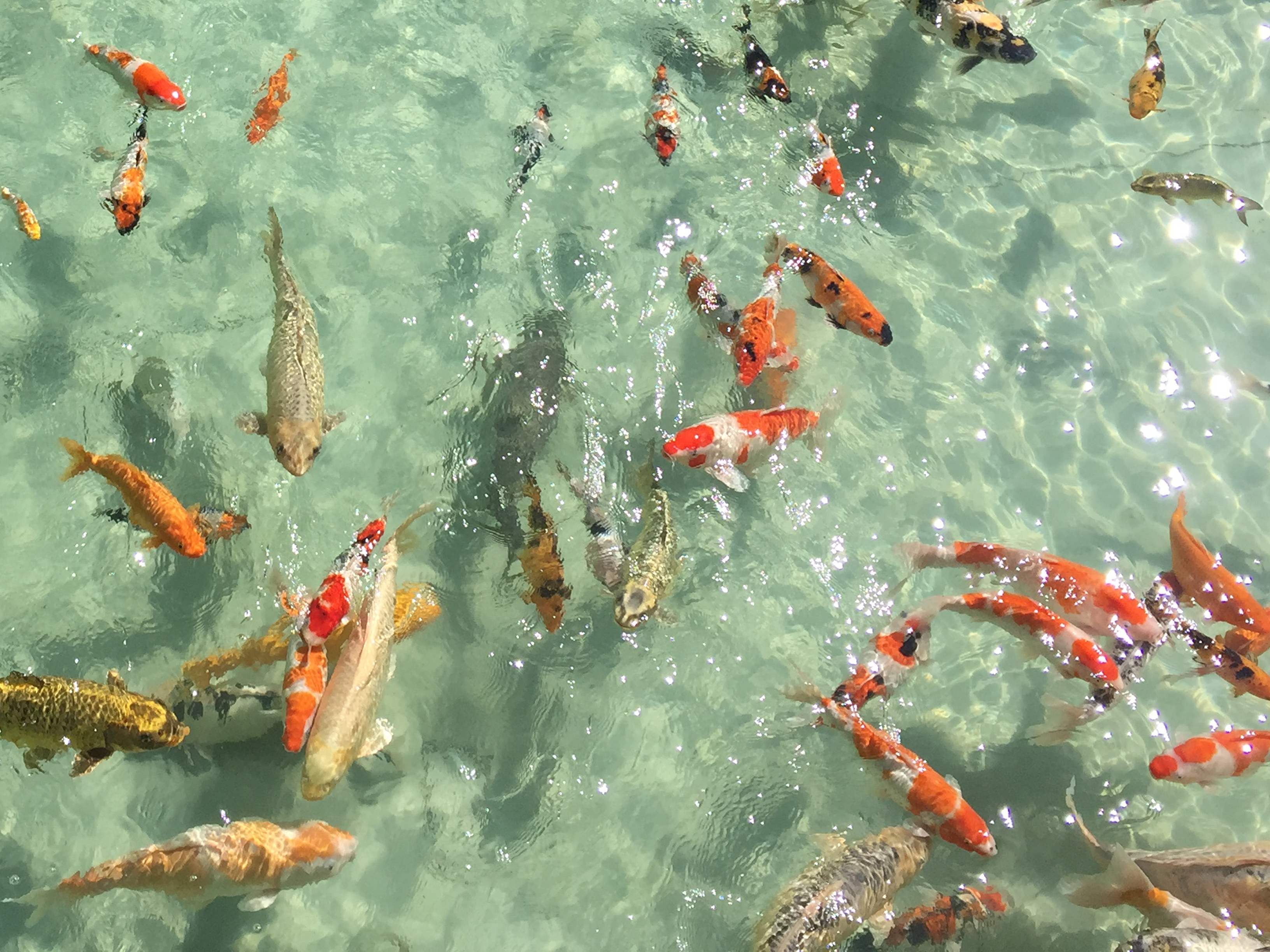|
Trichromis
The Salvin's cichlid (''Trichromis salvini''), also known as the yellow-belly cichlid or tricolored cichlid, is a species of the family Cichlidae. It is found in rivers of the Atlantic slope of southern Mexico, Belize, and Guatemala. It is the only species in the genus ''Trichromis''. Taxonomy In 2015, McMahan ''et al.'' published a paper placing this species in the genus ''Trichromis''. The relationship of Salvin's cichlid to other Central American cichlid had long been debated. Genetic research by Říčan ''et al.'' revealed that the closest relatives to ''Trichromis'' are the firemouth cichlid and its congeners in the genus ''Thorichthys''. Description The Salvin's cichlid is oblong in shape and has a rather pointed mouth compared to other Central American cichlids. The body is yellow with two lines of black "flowers" along the side and upper half of the back of the fish. These flowers have a blue pearl outline. It has black bars that cross the face, and both sexes have r ... [...More Info...] [...Related Items...] OR: [Wikipedia] [Google] [Baidu] |
Thorichthys
''Thorichthys'' is a genus of cichlid fish that is native to the Atlantic slope of Middle America, ranging from southern Veracruz and the Yucatán Peninsula in Mexico, to Guatemala and Honduras, with introduced populations in a few other countries. They tend to inhabit moderately-flowing to standing water such as rivers, streams, lakes, ditches and lagoons, and they are primarily freshwater fish, although ''T. helleri'' and ''T. meeki'' may occur in slightly brackish habitats. ''Thorichthys'' have somewhat pointy heads and their body often has a large blackish spot, a broad dark horizontal stripe and/or a sometimes inconspicuous pattern of vertical bands. They mostly feed on invertebrates and detritus. Members of ''Thorichthys'' do not exceed in standard length, and they are popular aquarium fish, especially the well-known firemouth cichlid (''T. meeki''). Genetic evidence shows that ''Thorichthys'' is most closely related to Salvin's cichlid, the only species of the genus '' ... [...More Info...] [...Related Items...] OR: [Wikipedia] [Google] [Baidu] |
Heroini
Heroini is a fish tribe from the Cichlasomatinae subfamily in the family Cichlidae (cichlids). All cichlids native to the Greater Antilles, United States (southern Texas), Mexico and northern Central America are members of this tribe. It also includes most cichlid species in southern Central America (where the only non-Heroini cichlids are ''Andinoacara'' and ''Geophagus'') and several species from South America (where several other tribes exist). A large percentage of its species were formerly placed in the genus ''Cichlasoma'' (itself now placed in the tribe Cichlasomatini) but have since been moved to other genera. In other classifications, the tribe Heroini is placed in the subfamily Cichlinae. Genera , this tribe includes 46 valid genera and approximately 184 species: Genera of disputed validity * '' Kihnichthys'' (McMahan & Matamoros, 2015) – Considered by Říčan & Piálek (2016) and Azas (2020) to be a junior synonym of '' Cincelichthys''. * ''Nosferatu'' ( De la ... [...More Info...] [...Related Items...] OR: [Wikipedia] [Google] [Baidu] |
Caleb D
Caleb ( ; , Tiberian vocalization: , Modern Israeli Hebrew: ) is a figure who appears in the Hebrew Bible as a representative of the Tribe of Judah during the Israelites' the Exodus, journey to the Promised Land. Following the Israelite conquest of Canaan, Caleb was described as a Kenizzite and is said to have received lands originally intended for the Tribe of Judah. The Calebites, his descendants, likely comprised a mixed population of Edomite and Judean elements. They resided in Hebron Hills, southern Judah and in the northern part of the Negev region. A reference to him is also found in the Quran, although his name is not mentioned (Al-Ma'idah: 20–26). Name ''Caleb'' is related to the Hebrew word for 'dog' (), with ''The Jewish Encyclopedia'' reporting that the animal is thought to be "the totem of a clan". Biblical account Caleb, son of Jephunneh from the tribe of Tribe of Judah, Judah (Book of Numbers, ), is the same Caleb the great-grandson of Judah (son of Jacob) ... [...More Info...] [...Related Items...] OR: [Wikipedia] [Google] [Baidu] |
Honduras
Honduras, officially the Republic of Honduras, is a country in Central America. It is bordered to the west by Guatemala, to the southwest by El Salvador, to the southeast by Nicaragua, to the south by the Pacific Ocean at the Gulf of Fonseca, and to the north by the Gulf of Honduras, a large inlet of the Caribbean Sea. Its Capital city, capital and largest city is Tegucigalpa. Honduras was home to several important Mesoamerican cultures, most notably the Maya civilization, Maya, before Spanish colonization of the Americas, Spanish colonization in the sixteenth century. The Spanish introduced Catholic Church, Catholicism and the now predominant Spanish language, along with numerous customs that have blended with the indigenous culture. Honduras became independent in 1821 and has since been a republic, although it has consistently endured much social strife and political instability, and remains one of the poorest countries in the Western Hemisphere. In 1960, the northern part o ... [...More Info...] [...Related Items...] OR: [Wikipedia] [Google] [Baidu] |
Fish Of Belize
A fish (: fish or fishes) is an aquatic, anamniotic, gill-bearing vertebrate animal with swimming fins and a hard skull, but lacking limbs with digits. Fish can be grouped into the more basal jawless fish and the more common jawed fish, the latter including all living cartilaginous and bony fish, as well as the extinct placoderms and acanthodians. In a break to the long tradition of grouping all fish into a single class (Pisces), modern phylogenetics views fish as a paraphyletic group. Most fish are cold-blooded, their body temperature varying with the surrounding water, though some large active swimmers like white shark and tuna can hold a higher core temperature. Many fish can communicate acoustically with each other, such as during courtship displays. The study of fish is known as ichthyology. The earliest fish appeared during the Cambrian as small filter feeders; they continued to evolve through the Paleozoic, diversifying into many forms. The earliest fish with ... [...More Info...] [...Related Items...] OR: [Wikipedia] [Google] [Baidu] |
Cichlid Fish Of Central America
Cichlids () are a large, diverse, and widespread family of percomorph fish in the family Cichlidae, order Cichliformes. At least 1,760 species have been scientifically described, making it one of the largest vertebrate families, with only the Cyprinidae being more speciose. New species are discovered annually, and many species remain undescribed. The actual number of species is therefore unknown, with estimates varying between 2,000 and 3,000. They are native to the Neotropics, Africa (including Madagascar), the Middle East, and the Indian subcontinent, although some species have been introduced worldwide. Many cichlids, particularly tilapia, are important food fishes, while others, such as the '' Cichla'' species, are valued game fish. The family also includes many popular freshwater aquarium fish kept by hobbyists, including the angelfish, oscars, and discus. Cichlids have the largest number of endangered species among vertebrate families, most in the haplochromine gro ... [...More Info...] [...Related Items...] OR: [Wikipedia] [Google] [Baidu] |
Taxa Named By Albert Günther
In biology, a taxon (back-formation from ''taxonomy''; : taxa) is a group of one or more populations of an organism or organisms seen by taxonomists to form a unit. Although neither is required, a taxon is usually known by a particular name and given a particular ranking, especially if and when it is accepted or becomes established. It is very common, however, for taxonomists to remain at odds over what belongs to a taxon and the criteria used for inclusion, especially in the context of rank-based (" Linnaean") nomenclature (much less so under phylogenetic nomenclature). If a taxon is given a formal scientific name, its use is then governed by one of the nomenclature codes specifying which scientific name is correct for a particular grouping. Initial attempts at classifying and ordering organisms (plants and animals) were presumably set forth in prehistoric times by hunter-gatherers, as suggested by the fairly sophisticated folk taxonomies. Much later, Aristotle, and later still ... [...More Info...] [...Related Items...] OR: [Wikipedia] [Google] [Baidu] |
Fish Described In 1862
A fish (: fish or fishes) is an aquatic, anamniotic, gill-bearing vertebrate animal with swimming fins and a hard skull, but lacking limbs with digits. Fish can be grouped into the more basal jawless fish and the more common jawed fish, the latter including all living cartilaginous and bony fish, as well as the extinct placoderms and acanthodians. In a break to the long tradition of grouping all fish into a single class (Pisces), modern phylogenetics views fish as a paraphyletic group. Most fish are cold-blooded, their body temperature varying with the surrounding water, though some large active swimmers like white shark and tuna can hold a higher core temperature. Many fish can communicate acoustically with each other, such as during courtship displays. The study of fish is known as ichthyology. The earliest fish appeared during the Cambrian as small filter feeders; they continued to evolve through the Paleozoic, diversifying into many forms. The earliest fish wi ... [...More Info...] [...Related Items...] OR: [Wikipedia] [Google] [Baidu] |
Hardy Fish
Fishkeeping is a popular hobby, practiced by aquarists, concerned with keeping fish in a home aquarium or garden pond. It is a practice that encompasses the art of maintaining one's own aquatic ecosystem, featuring a lot of variety with various water systems, all of which have their own unique features and requirements. Fishkeeping primarily serves as a token of appreciation and fascination for marine life and the environment that surrounds such, along with other purposes such as the piscicultural fishkeeping industry, serving as a branch of agriculture, being one of the most widespread methods of cultivating fish for commercial profit. Origins of fishkeeping Fish have been raised as food in pools and ponds for thousands of years. Brightly colored or tame specimens of fish in these pools have sometimes been valued as pets rather than food. Many cultures, ancient and modern, have kept fish for both functional and decorative purposes. Ancient Sumerians kept wild-caught fish in ... [...More Info...] [...Related Items...] OR: [Wikipedia] [Google] [Baidu] |






